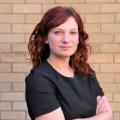
A SURVEY on introducing buffer zones around abortion clinics to ward off protesters received more than 1000 responses in its first week.
Green MSP Gillian Mackay’s Proposed Abortion Services Safe Access Zones (Scotland) Bill has gone out to consultation for 12 weeks to gather people’s views on stopping anti-abortion activists from standing within the immediate vicinity of clinics.
Demonstrations outside sexual health clinics have intensified in recent months with protesters applying what Mackay has described as “new” tactics, with amplification such as megaphones being used outside Sandyford in Glasgow - which provides a range of sexual, reproductive and emotional health services.
READ MORE: Buffer zone laws to be brought in 'as soon as possible', say Greens
Mackay said she was delighted with the level of engagement so far, with most people getting behind the proposal.
She said: “I’m very pleased with the response to the consultation so far. It’s been overwhelmingly positive and I hope that the public continue to engage with the process.”
According to the British Pregnancy Advisory Service (BPAS) and Back Off Scotland, since 2017 there have been seven hospitals and clinics in Scotland that have experienced protests, while 70% of women of reproductive age live in a health board area that has hospitals or clinics that have been targeted by anti-choice groups in the past five years.
READ MORE: Tory MP Paul Holmes resigns from UK Government over partygate 'distress'
BPAS reports the largest targeted anti-abortion gathering on record in the UK took place outside Glasgow’s Queen Elizabeth University Hospital in 2018, with around 200 people holding a candlelit vigil immediately outside the maternity wing entrance.
The consultation asks people whether they support the buffer zone proposal, whether they think they should be implemented nationally, whether zones should be 150 metres around clinic entrances, and what types of activity they consider should be banned in a buffer zone.
There are also questions around financial implications and equalities and there is a space for general comments.
Speaking to The National earlier this week, Mackay said she had spoken to clinicians who had had to put tasks aside to go out and deal with protestors or play music to drown them out.
While the bill is going through its stages, she said she hoped police would make it clear where the line is on when they can intervene in protests.
READ MORE: New Flamingo Land plans for resort in Loch Lomond 'hugely worrying'
She said: “We understand there are complexities with how we enforce this and the last thing I want is for public money to be spent on a legal challenge because it was perceived police moved them [protestors] on when they shouldn’t have been.
“We need them [police] to be clear where the line is because there’s been a clear escalation compared to the previous nature of these protests.
“The tactics are new, the amplification is new. We need to keep people safe.
"Clinicians are having to leave what they are doing to go out and deal with them."
Women’s health minister Maree Todd visited the Sandyford Clinic in Glasgow on Thursday and spoke with staff who had to “work in the shadow” of recent protests.
She urged protesters to instead demonstrate outside Parliament, where legislation is passed.
Earlier this month, Nicola Sturgeon said will “convene and personally chair” a summit to address anti-abortion protests in Scotland and the rolling back of abortion rights around the world.
She said the Scottish Government would “support any local authority that is willing to use bylaws to establish buffer zones”, adding: “I am very happy to convene and indeed I will personally chair a roundtable to discuss buffer zones and any other matters that need to be addressed to ensure safe and timely access to abortion services in Scotland.”




Why are you making commenting on The National only available to subscribers?
We know there are thousands of National readers who want to debate, argue and go back and forth in the comments section of our stories. We’ve got the most informed readers in Scotland, asking each other the big questions about the future of our country.
Unfortunately, though, these important debates are being spoiled by a vocal minority of trolls who aren’t really interested in the issues, try to derail the conversations, register under fake names, and post vile abuse.
So that’s why we’ve decided to make the ability to comment only available to our paying subscribers. That way, all the trolls who post abuse on our website will have to pay if they want to join the debate – and risk a permanent ban from the account that they subscribe with.
The conversation will go back to what it should be about – people who care passionately about the issues, but disagree constructively on what we should do about them. Let’s get that debate started!
Callum Baird, Editor of The National
Comments: Our rules
We want our comments to be a lively and valuable part of our community - a place where readers can debate and engage with the most important local issues. The ability to comment on our stories is a privilege, not a right, however, and that privilege may be withdrawn if it is abused or misused.
Please report any comments that break our rules.
Read the rules here